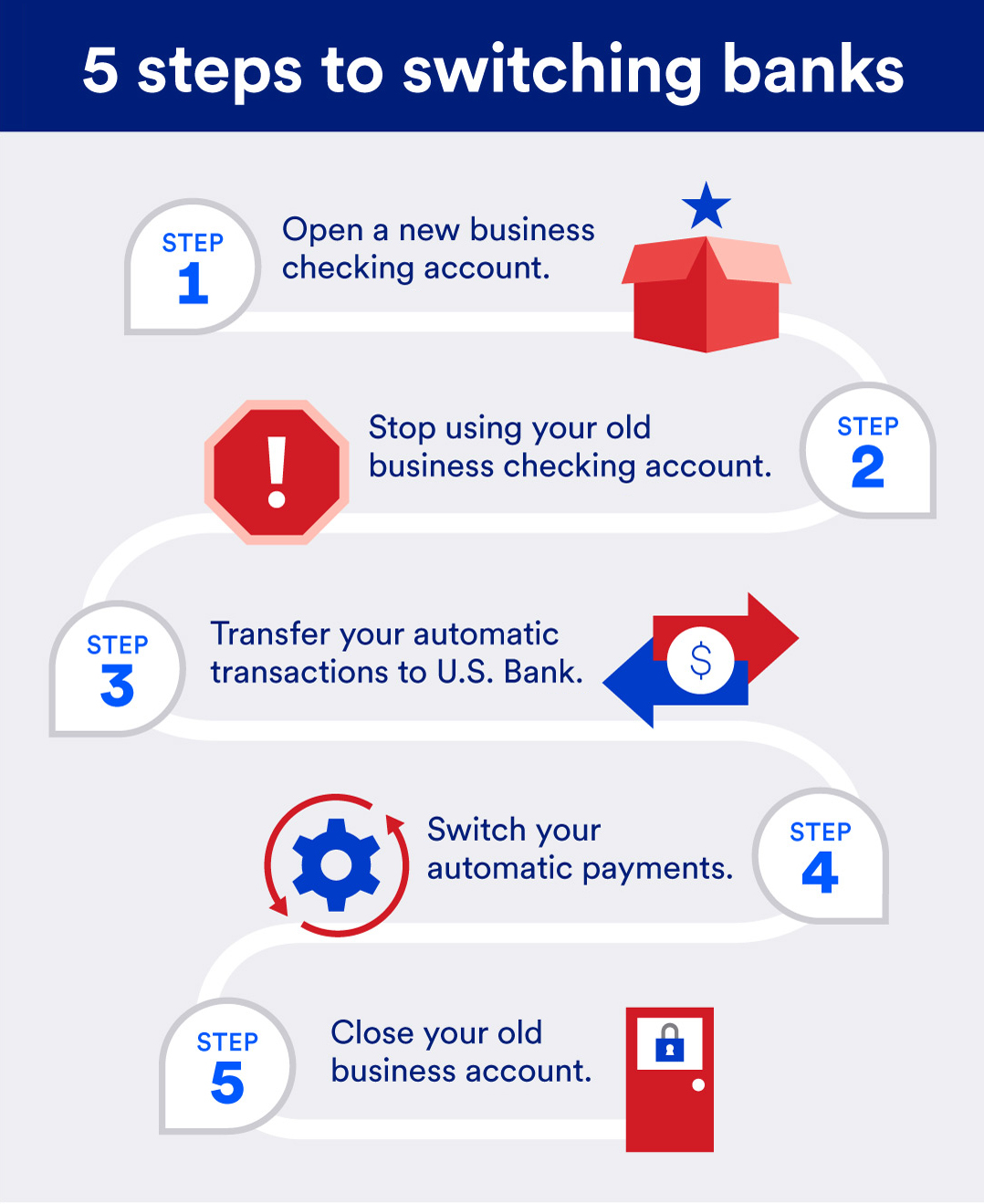How to switch banks for your business
Now that you’re considering changing your business bank account and have a new banking partner like U.S. Bank in mind, here are five simple steps to make changing banks seamless.

- Open a new business checking account. Write down the routing number and your new business checking account number. You will need this information to change your automatic payments and direct deposits from your old account to your new one.
Stop using your old business checking account. Keep the account open until all outstanding checks have cleared and your automatic payments and transactions have been switched over to your new account.
Transfer your automatic transactions to your new bank. Contact your vendors and merchants who may send automatic payments to your old business bank account and notify them of the new routing and account number.
Switch your automatic payments. Payments such as dues, utility bills and vendor payments that are automatically debited from your account will need to be notified of the new account. Have your new checking account number and routing transit number handy when you call to switch.
Close your old business account. Once all your checks have cleared and your automatic payments and direct deposits are successfully being deducted or credited from your new account, close your old business bank account. If you have old checks, bring them to one of your new bank’s locations and they can securely shred or destroy the old inventory and order new deposit materials.
Choosing to change your business’s bank account can feel daunting, but when you partner with an institution who values you as a customer, offers flexible tools and provides transparency around fees and limitations, the transition to a new business bank that meets your needs will be well worth the extra effort.
Ready to put your plan into action? Explore our banking account options to get the business bank account change started.











































